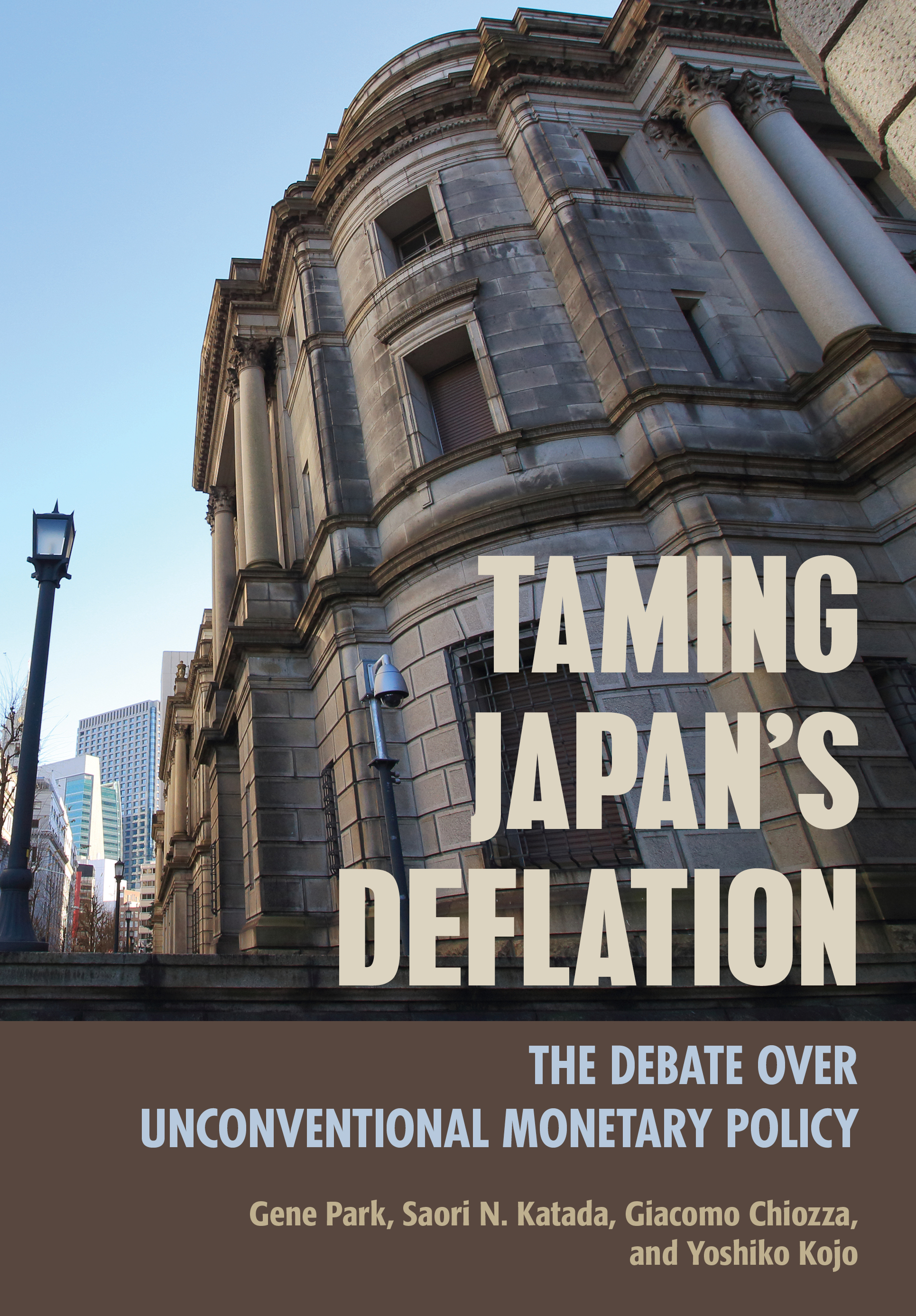
Title
Taming Japan’s Deflation The Debate over Unconventional Monetary Policy
Size
264 pages
Language
English
Released
November 15, 2018
ISBN
9781501728174
Published by
Cornell University Press
Book Info
See Book Availability at Library
Japanese Page
In the wake of the global financial crisis of 2008, many countries are experiencing low inflation and in some cases outright deflation. Many central banks across the globe have tapped “unconventional” monetary policies such as quantitative easing (QE), price-level targets and negative interest rates in their battle against deflation. Starting in the latter half of the 1990s, Japan’s economy slid into recession and prices began to decline, and the economy entered a pernicious deflationary spiral, a trend that largely continued for more than fifteen years. Even though Japan’s economy was mired in deflation for longer than any other major economy, the Bank of Japan (BOJ) was slow to embrace these unconventional measures despite an early experiment with QE in early 2000s. With Prime Minister Abe return to power, Japan finally shifted course at the start of 2013 with the launch of “unconventional” monetary policy under the leadership of the new BOJ Governor Kuroda. How can we understand the seemingly long resistance to sustained reflationary monetary policy in Japan?
The authors argue that the BOJ’s resistance to experimenting with bolder policy stemmed from entrenched policy ideas that were hostile to activist monetary policy. Japan’s longer commitment to its monetary orthodoxy reflects entrenched policy ideas (a set of shared beliefs about policy goals, priorities, and causal relationships) within Japan’s monetary policy-making network. Central to the network was the BOJ (not just the Policy Board but the larger bureaucratic organization), which developed a relatively coherent worldview (policy ideas) over the course of its previous experiences. Policy ideas included placing a premium on price stability, skepticism about the efficacy of monetary policy to spur economic growth, and interpretation of independence that made it suspicious of acting in concert with the executive and the Ministry of Finance. The book explains how these policy ideas evolved over the course of the BOJ’s long history and gained dominance because of the closed nature of the broader policy network.
The explanatory power of policy ideas and networks suggests a basic inadequacy in the dominant framework for analysis of the politics of monetary policy derived from the literature on central bank independence. This approach privileges the interaction between political principals and their supposed agents, central bankers; but the book shows clearly that central bankers’ views, shaped by ideas and institutions, can be decisive in determining monetary policy. Through a combination of institutional analysis, quantitative empirical tests (content analysis of the minutes of the BOJ’s Policy Board meetings by computer text analysis), in-depth case studies with more than forty interviews with elites, and structured comparison of Japan with other countries, the authors show that, ultimately, the decision to adopt aggressive monetary policy depends largely on the bankers’ established policy ideas and policy network.
(Written by KOJO Yoko, Professor, Graduate School of Arts and Sciences / 2020)
Table of Contents
Preface and Acknowledgments
Acronyms
Notes of Conventions
Chapter 1. Ideas, Networks, and Monetary Politics in Japan
Chapter 2. Deflation, Monetary Policy Responses, and the BOJ
Chapter 3, Monetary Politics; Interests, Ideas, and Policy Networks
Chapter 4. The BOJ Worldview and Its Historical Development
Chapter 5. The Monetary Policy Network
Chapter 6. Ideas and Monetary Policy: A Quantitative Test
Chapter 7. Monetary Policy making, 1998-2012
Chapter 8. Abenomics and the Break with the BOJ Orthodoxy
Chapter 9. Conclusion: Monetary Policy, Networks, and the Diffusion of Ideas
Appendix
Appendix to Chapter 5
Appendix to Chpater 6
References
Index
Related Info
TAMING JAPAN’S DEFLATION: The Debate over Unconventional Monetary Policy (Cornell University Press, 2018. xvii, 243 pp)
https://pacificaffairs.ubc.ca/book-reviews/taming-japans-deflation-the-debate-over-unconventional-monetary-policy-by-gene-park-saori-n-katada-giacomo-chiozza-and-yoshiko-kojo/



 Find a book
Find a book

